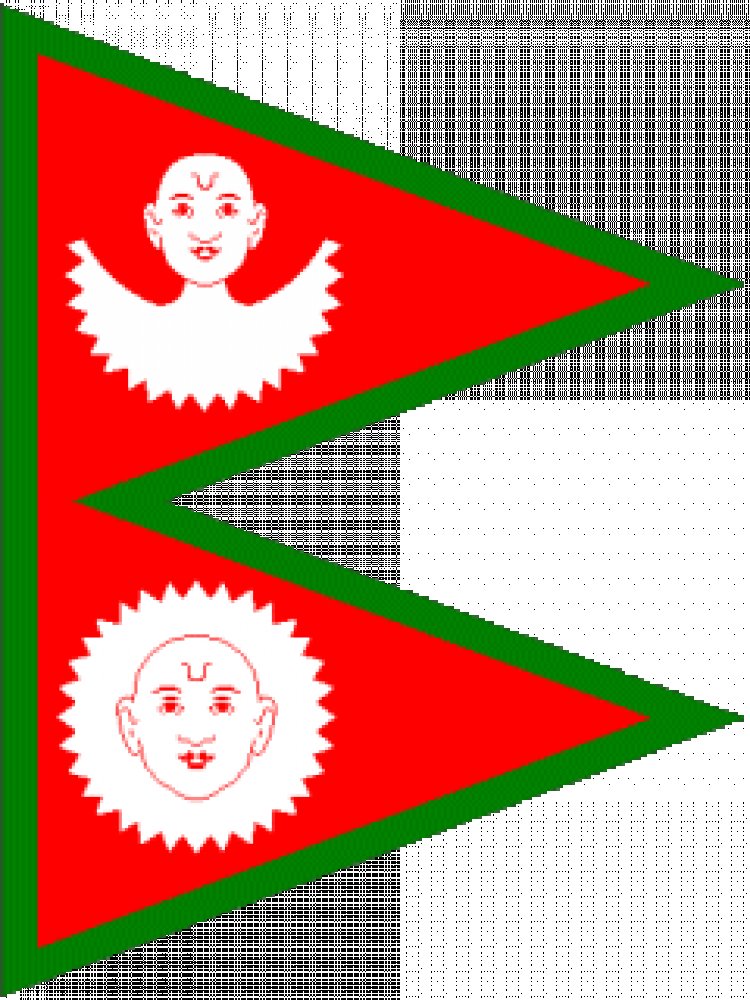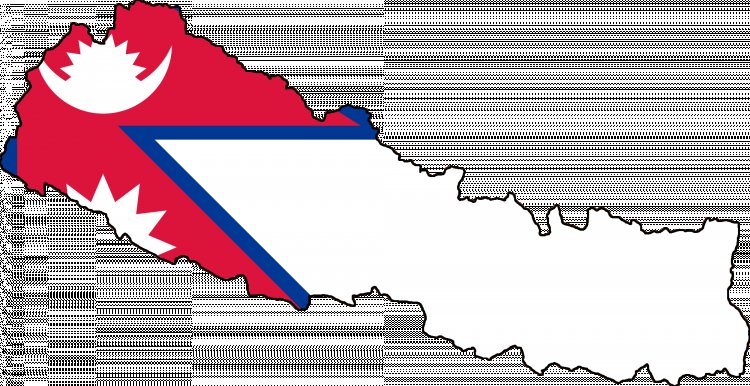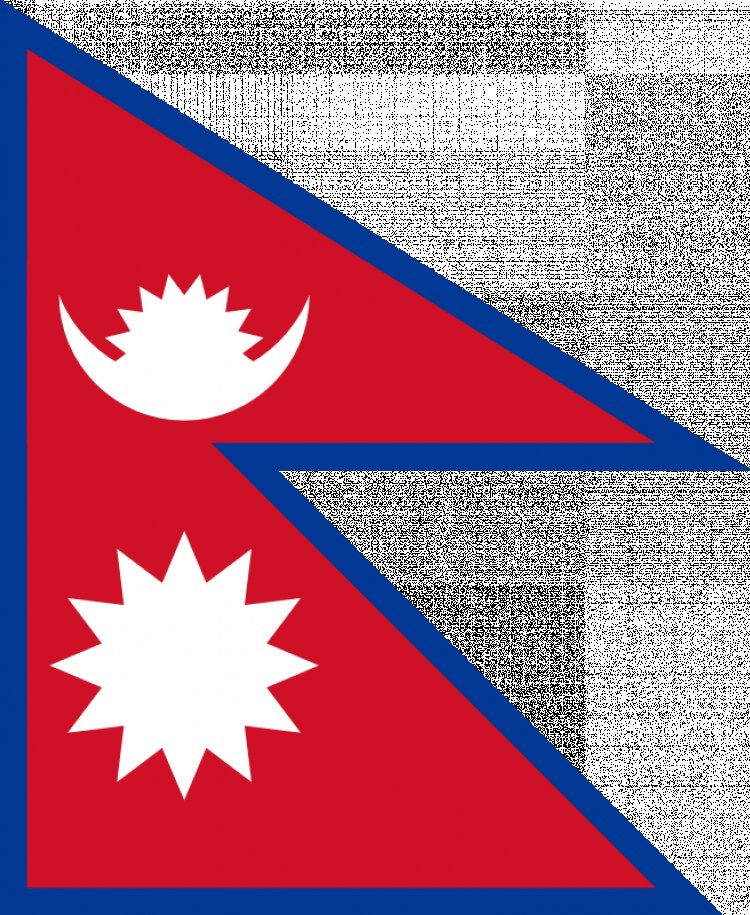Nepal's Unique National Flag: Symbolizing Pride, Unity, and Identity
Discover Nepal's unique national flag, the only non-quadrilateral flag in the world. Explore its symbolism, historical significance, and cultural representations, reflecting the pride, unity, and identity of the Nepali people.
Each country possesses its own distinctive identity, whether it is rooted in its culture, diversity, natural splendor, or economic progress. Nepal, too, holds its unique identity in various aspects such as its rich culture, breathtaking landscapes, historical sites, and more. However, the true embodiment of Nepal's identity lies within its national flag. The Nepalese people take immense pride in their national flag, which serves as a powerful symbol of their nation. While every country possesses a national flag as a representation of its identity, Nepal's flag stands out for its extraordinary design. Unlike the flags of other nations, which typically feature a quadrilateral shape, Nepal's flag is triangular. This distinction makes Nepal the only country in the world to have a non-quadrilateral national flag. The flag is formed by combining two pennants, with the smaller upper portion featuring a crescent and eight-rayed moon and the larger lower portion showcasing a sun with twelve rays.
History:

Before 1962, the emblems on Nepal's flag, including the sun and the crescent moon, depicted human faces with distinct features such as eyes, ears, and noses. The symbol on the forehead of the moon represented the royal family, while the sun symbolized the Rana family. However, in a later revision, the decision was made to remove the human faces from the emblems. Since then, only the sun and the moon have been portrayed on the flag, representing their respective lineages without the inclusion of facial features.
About the Current Flag:

The current flag was adopted on B.S. 2019 Poush 1 along with the formation of a new constitutional government. It was Shankar Nath Rimal, a civil engineer, who designed the current flag of Nepal at the request of King Mahendra. The picture of the moon and the sun symbolizes that Nepal will exist till the moon and the sunshine in this universe remain, and Nepal will remain till the sun and the moon remain. The current Nepali flag is adorned with three symbolic colors: crimson (red), blue, and white. The flag's foundation is crimson, representing the unwavering courage and bravery of Nepali soldiers. It is complemented by a deep blue border, signifying peace, cooperation, and friendship since the age of Gautam Buddha. The color white symbolizes purity, adding a touch of clarity and innocence to the flag's overall meaning. The two triangular shapes within the Nepali flag carry symbolic meaning. They represent the majestic Himalayan Mountains, highlighting Nepal's geographical prominence. All these concepts were declared by the democratic government, which was ruled by the general public, and embody the idea that the nation's love for its mother and mother earth is more important than anything else. That's why Nepal's flag represents the love of the motherland.
Some of the Facts about the Nepali Flag:
From a religious perspective, the two triangles on the flag of Nepal represent the two major religions in Nepal: Hinduism and Buddhism. From a religious standpoint, the white color used for the moon and the sun symbolizes neutrality. The triangular shape of the flag also signifies the traditional pagoda style, which is the architectural design commonly used for building temples and monasteries. According to cultural myths, the sun is seen as a heavenly symbol of fire, which is believed to be one of the fundamental components of all matter. In Hinduism, the sun is considered one of the five gods known as the Panchadev, with "Pancha" meaning five and "dev" meaning god. The tradition of worshipping the sun is deeply rooted in ancient Vedic rituals. Nepal was a Hindu kingdom until a few decades ago, and the sun on the flag also represents the belief in the gods and their power. From a religious perspective, the sun on the flag signifies the hotness of the land of the Terai region, and the moon on the flag signifies the coldness of the altitude of the Himalayan region of Nepal. The red color on the flag also symbolizes the red sindoor (vermilion) worn by married women in Nepalese Hindu culture. The color red is even considered a symbol of good luck. It is also believed that the red color of the flag represents the color of the robes worn by Buddhist monks.
Respect for the Flag:
The Nepali flag is held in high regard, and it is important to treat it with respect. It is customary to hoist and lower the flag with care and to avoid allowing it to touch the ground or be used for any disrespectful or inappropriate purposes.
The cars of important leaders like the president, prime ministers, and governors often have small national flags on them. These flags serve as a representation of their country. You may notice these flags hanging on their vehicles as a symbol of their role as representatives of the nation. This is also a show of respect for the flag by representatives of our nation.
Government buildings often proudly display national flags. These flags are raised to show respect and to symbolize the nation they represent. You can spot these national flags flying high atop government buildings, signifying the honor and reverence given to our national flag.
The army and military play a vital role in protecting a country. They are also representatives of the nation. Therefore, it is expected and natural to see the national flag flying at military headquarters and National Guard buildings. This is a way to honor and show respect to the national flag in recognition of the important role played by the military in safeguarding the country.
The examples mentioned earlier demonstrate the respect that Nepalese people and representatives of Nepal show for flags. Similarly, the people of Nepal themselves are unique in the world because of their love and respect for everything associated with Nepal. It doesn't matter what it is; it truly matters whether it is connected to Nepal. This deep sense of attachment and appreciation for their country sets Nepalese people apart and makes them distinctive.
Lastly, the Nepali flag is a symbol of pride, unity, and identity for the Nepali people. It represents the country's rich history, diverse culture, and the aspirations of its citizens.

 Alisha Dahal
Alisha Dahal 












